A few years ago, i had a 2 ix parts cars that didn't run. i wanted to find a way to test the Viscus Coupling in the Transfer Case since the "jack test" wasn't an option.
With some experimentation, here is what i came up with:
Test #1: for complete non running or running car
1) set the parking brake and/or chock both back wheels.
2) put the car in neutral.
3) jack up one of the FRONT wheels
4) Spin the wheel by hand or better yet, use a beam style torque wrench on the center axle nut.
you will need a fairly uncommon socket to accomplish this. i think the nut size is around 28-30mm? my inexpensive solution was to go to napa and buy a cheap 6 point thin wall 1 3/16" deep socket. i think this tool was around 10 bucks. you probably don't need a deep socket to do this test but you will if you are are checking a tc that is out of the car. (more on this below) also, most axle nuts are held on with a sheetmetal retainer that will probably impede you from getting a good grip on the nut with your socket. you can put a socket on one of the lug nuts instead but your torque value will be mathematically skewed by about 3".
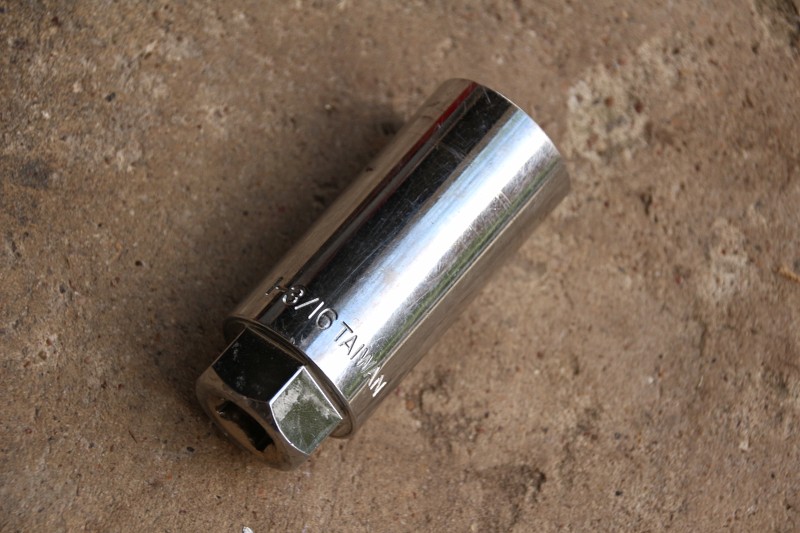
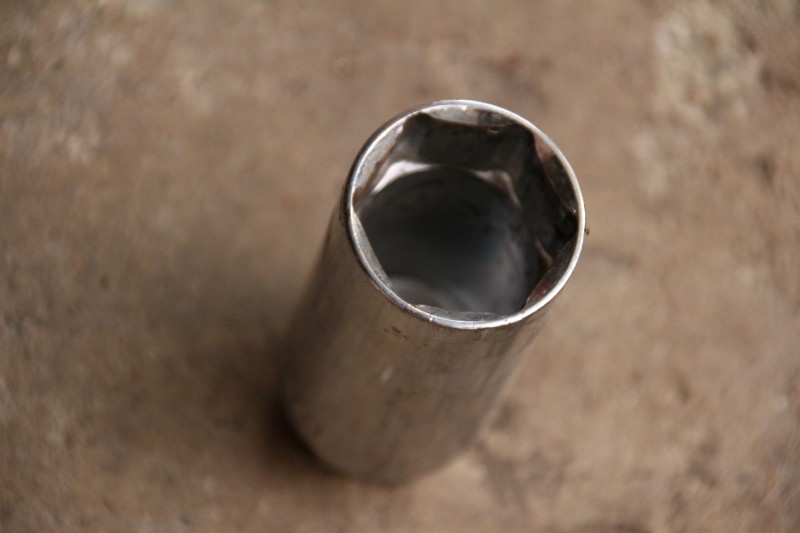
once you get the car lifted up and the wrench on the axle nut, you should feel a nice smooth fluid resistance as you rotate the wheel. in my case, i measured approximately 62ft/lbs as the wheel was spinning. unfortunately, i cannot find my beam style torque wrench and had to use the spring style. this type of wrench isn't very accurate for this test but perhaps its better than nothing. something to point out: it seems to me that the faster you spin the viscous coupling, the higher the torque rating. the reading i have above resulted from spinning the wheel about 1/4 turn in aproximately 2 seconds.
if you can spin your front wheel with very little effort, this is an indication your vc is shot. unfortunately, this is probably the case for most of you.
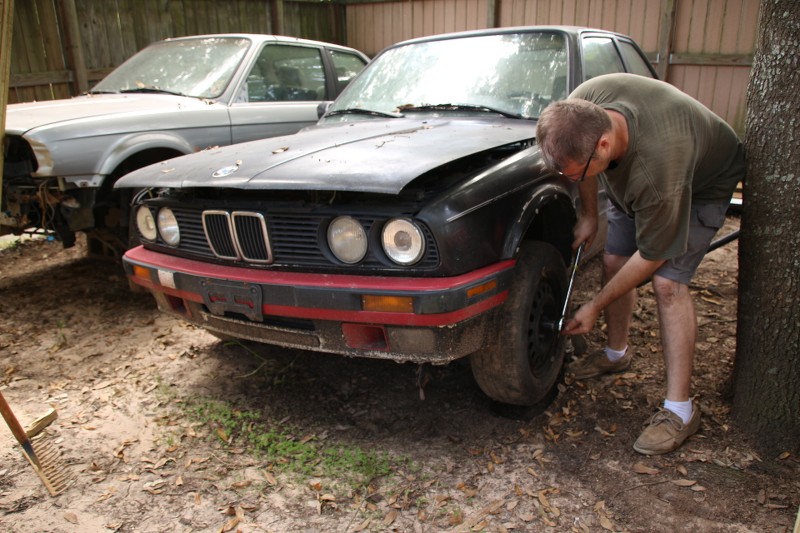
Test #2: Testing the Transfer case while it is out of the car
you will need something to hold the front input shaft from moving. the easiest thing would be to stick the front driveshaft in the socket.
in this case, it is imperative that you use a thin wall deep socket as pictured above. this is the only thing that will fit because of the alignment pin that sticks off the end of the rear shaft. even if you remove the guibo, a normal wall thickness socket won't seat on the nut.
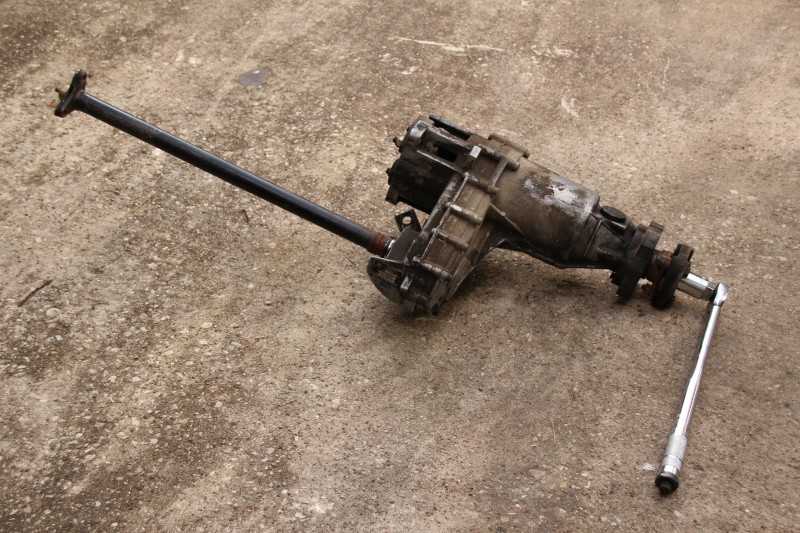
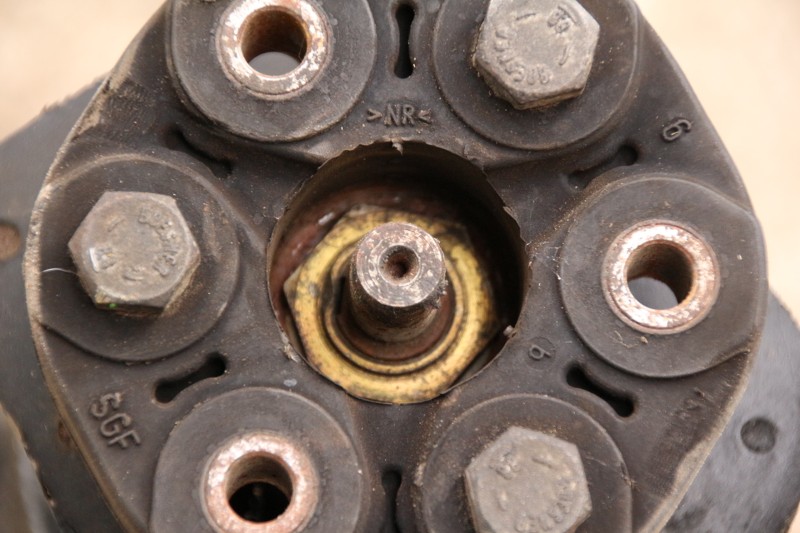
since i didn't want to mar up my driveshaft with a pipe wrench, i elected to step on the triangular end of the driveshaft in order to hold it in place. i used the same socket mentioned above to attach the torque wrench to the rear output.
here is another "action" pic of me doing the test:
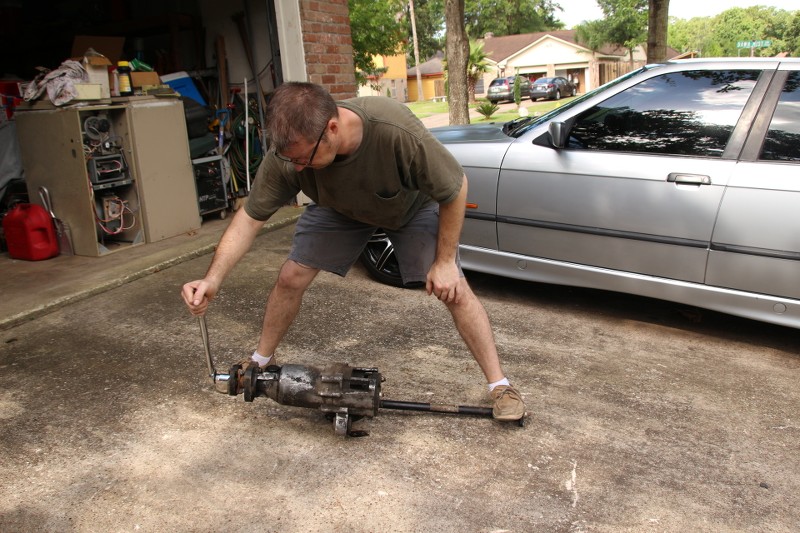
once again, i couldn't find my beam style torque wrench so i used the shitty harbor freight spring type. in this case i measured somewhere around 18 ft pounds of torque. i guess this smaller value might make sense because when you test it on the car you have to go backwards through a 3.90 or 4.10 front diff. once again, the coupling has a nice fluid feeling resistance. as posted above, it seems to me that the faster you spin the viscous coupling, the higher the torque rating. the reading i have above resulted from spinning the rear output about 1/4 turn in aproximately 2 seconds.
previously, i have had a few transfer cases with bad couplings. i found that i could insert the front shaft into the socket and use my hands to spin the case outputs against each other. if you can do this with yours, this obviously is an indication your coupling has failed.
i certainly encourage all of you to contribute to this thread in any useful way possible. i will be happy to update the original post as contributions come in.
this transfer case spec sheet comes from angus. you will note that it states the torque spec for a transfer case out of the car is 51ft/lbs @ 150 rpm. this works out to 2.5 revolutions/second. thus far, we have not figured out how to accomplish a reading at this speed.
With some experimentation, here is what i came up with:
Test #1: for complete non running or running car
1) set the parking brake and/or chock both back wheels.
2) put the car in neutral.
3) jack up one of the FRONT wheels
4) Spin the wheel by hand or better yet, use a beam style torque wrench on the center axle nut.
you will need a fairly uncommon socket to accomplish this. i think the nut size is around 28-30mm? my inexpensive solution was to go to napa and buy a cheap 6 point thin wall 1 3/16" deep socket. i think this tool was around 10 bucks. you probably don't need a deep socket to do this test but you will if you are are checking a tc that is out of the car. (more on this below) also, most axle nuts are held on with a sheetmetal retainer that will probably impede you from getting a good grip on the nut with your socket. you can put a socket on one of the lug nuts instead but your torque value will be mathematically skewed by about 3".


once you get the car lifted up and the wrench on the axle nut, you should feel a nice smooth fluid resistance as you rotate the wheel. in my case, i measured approximately 62ft/lbs as the wheel was spinning. unfortunately, i cannot find my beam style torque wrench and had to use the spring style. this type of wrench isn't very accurate for this test but perhaps its better than nothing. something to point out: it seems to me that the faster you spin the viscous coupling, the higher the torque rating. the reading i have above resulted from spinning the wheel about 1/4 turn in aproximately 2 seconds.
if you can spin your front wheel with very little effort, this is an indication your vc is shot. unfortunately, this is probably the case for most of you.

Test #2: Testing the Transfer case while it is out of the car
you will need something to hold the front input shaft from moving. the easiest thing would be to stick the front driveshaft in the socket.
in this case, it is imperative that you use a thin wall deep socket as pictured above. this is the only thing that will fit because of the alignment pin that sticks off the end of the rear shaft. even if you remove the guibo, a normal wall thickness socket won't seat on the nut.


since i didn't want to mar up my driveshaft with a pipe wrench, i elected to step on the triangular end of the driveshaft in order to hold it in place. i used the same socket mentioned above to attach the torque wrench to the rear output.
here is another "action" pic of me doing the test:

once again, i couldn't find my beam style torque wrench so i used the shitty harbor freight spring type. in this case i measured somewhere around 18 ft pounds of torque. i guess this smaller value might make sense because when you test it on the car you have to go backwards through a 3.90 or 4.10 front diff. once again, the coupling has a nice fluid feeling resistance. as posted above, it seems to me that the faster you spin the viscous coupling, the higher the torque rating. the reading i have above resulted from spinning the rear output about 1/4 turn in aproximately 2 seconds.
previously, i have had a few transfer cases with bad couplings. i found that i could insert the front shaft into the socket and use my hands to spin the case outputs against each other. if you can do this with yours, this obviously is an indication your coupling has failed.
i certainly encourage all of you to contribute to this thread in any useful way possible. i will be happy to update the original post as contributions come in.
this transfer case spec sheet comes from angus. you will note that it states the torque spec for a transfer case out of the car is 51ft/lbs @ 150 rpm. this works out to 2.5 revolutions/second. thus far, we have not figured out how to accomplish a reading at this speed.


Comment